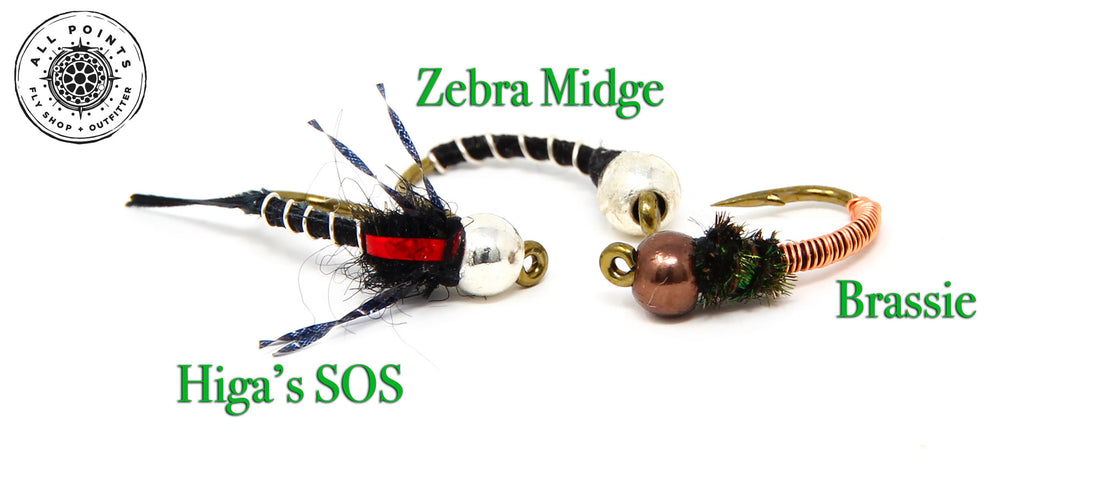
Midges + Winter + The Maine Bar Fly = ?
Share
At our last Maine Bar Fly held at Fore River Brewing, Shaun Baggitt brought us through three nymph patterns. Although these flies are uniquely effective during other times of the year, the winter is when these guys really get their shine! But why is that? Well, midges...During the winter when snow covers the ground and most of the still water is frozen over, insect life starts to slow down as well. The caddis and mayfly hatches that we see during the spring through fall are no longer - the air temperature has essentially halted their maturation process. But don't fret, there is still life! Behold the midge!
Even if you have never fished during the winter, you have probably seen a midge whether you knew it or not - especially along the tailwaters here in Maine. Further, you very well might have mistaken it for a mosquito. Midges are found in various arrays of sizes and types and are also high on a trout's grocery list. But, many anglers do not fish them. For some they are too small to tie or even knot on a leader (which is why we tied these on size 12s at the Maine Bar Fly)...for others they don't know how/where to fish them. It's possibly a combination of both. Well if you have never tied a small midge to the end of your leader, to extended tippet off of a dry fly, or at the end of a nymph rig, it's time to give it a try.
As mentioned, we tied our nymphs at the Bar Fly on size 12s for ease of learning, but midges are seen generally in the 16-18 range with plenty in 22s and beyond. Although this is small, the good thing for the tyer is that there are not a lot of materials involved for most of these midges. For instance, the Zebra Midge (which we tied) is essentially a hook + a bead + thread + wire. That's it. Because many midge patterns are imitating the larval stage which are found along the bottom of the river, the Zebra Midge has found a place in most anglers pack for it's simplicity and effectiveness.
For the reason that most midges are found along the bottom, and in slower moving sections, midge fishing in the winter tends to be done in slow drifts with the aid of an indicator. If you have ever seen a fish eat larval midges, they are usually sucking them off the bottom. So if you are not bumping your Zebra Midge off the rocks you are not in the strike zone. The river's currents usually funnel midges to these slower runs and holes so fish anxiously wait for the next midge delivery to arrive. If you are fishing in the winter look for these slower sections.
I hope that helps! There is still plenty of fishing to be done in the winter and it can be just as enjoyable if you adjust your tactics a little to suit the season. Bundle up, grab a thermos, and try out some midge fishing!
Words + Photo by: Josh Thelin


